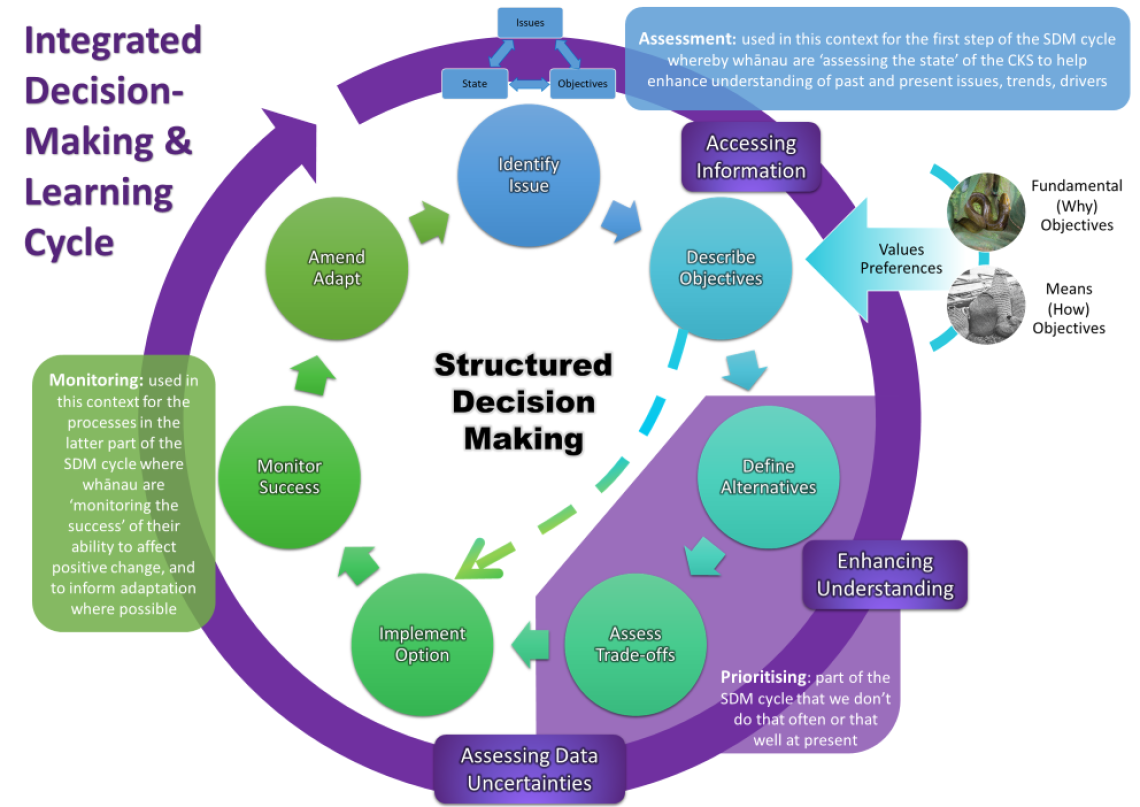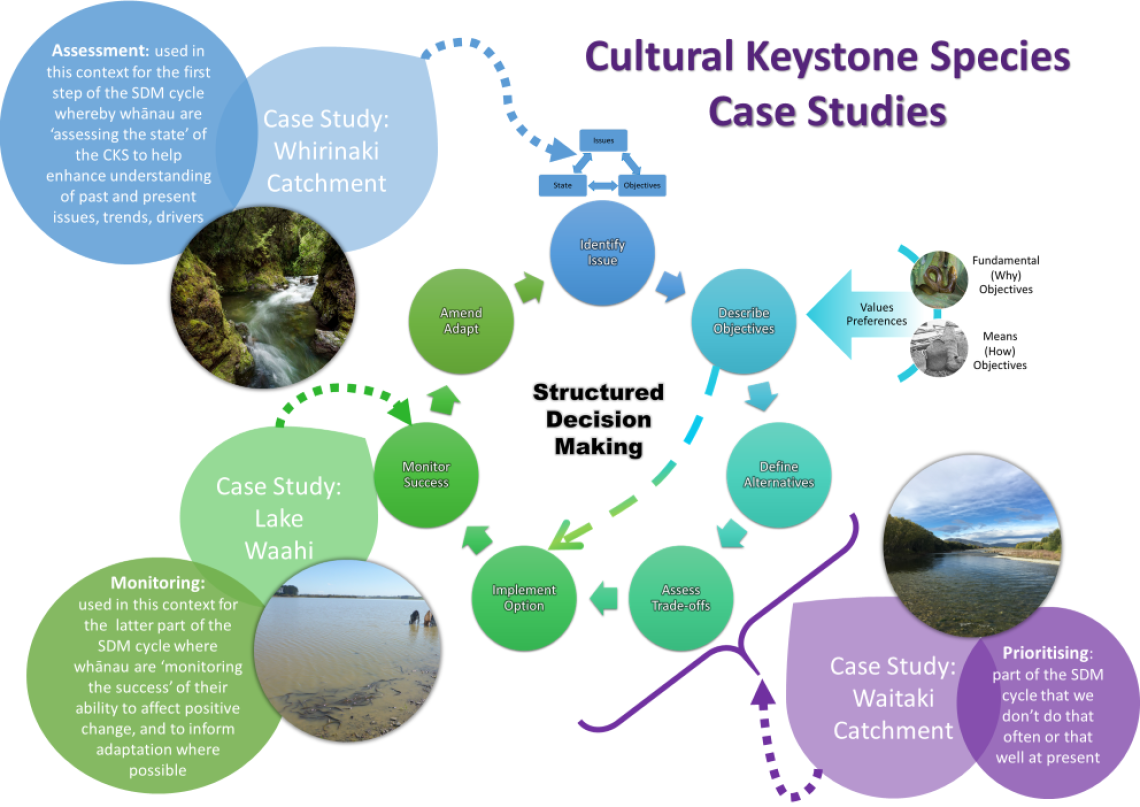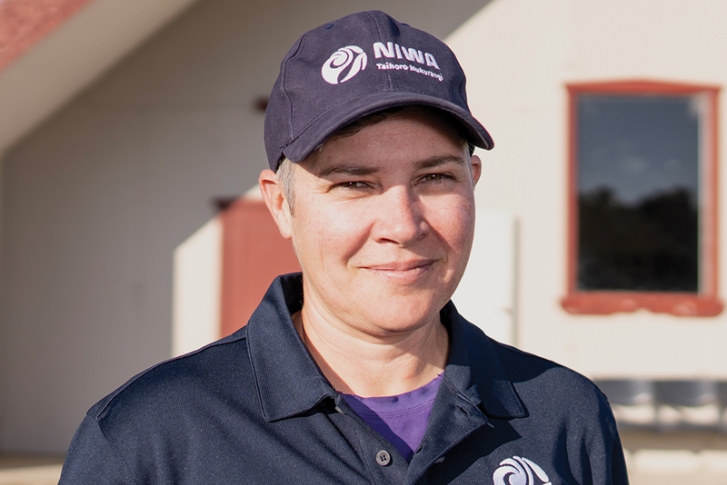This programme developed approaches to enable the recognition and prioritisation of cultural keystone species (CKS) in co-management, restoration and monitoring to help sustain the social, economic and ecological health and wellbeing of Aotearoa-New Zealand’s freshwater ecosystems.
This research investigated frameworks that will best assist whānau, hapū and local communities in CKS management and restoration. Potential frameworks were identified to support innovative ways to not only protect wāhi tapu, wāhi taonga (places and treasures sacred to Māori) and other cultural resources but also proactively realise whānau and hapū aspirations, which includes their aspirations for the management of CKS.
There are limited studies to understand the place of CKS and their significance to indigenous communities, within socio-ecological systems (SES). Throughout the program, Dr Gail Tipa has analysed several frameworks that are popular internationally and identified the strengths and shortcomings of each for whānau Māori.
In 2020 our research program held an interdisciplinary frameworks workshop which brought together CKS researchers and partners to discuss what a functioning and efficient SES might look like. In this workshop, we identified and adapted a structured decision-making framework as a potential way to help understand where each of our case study partnerships are at. It has also enabled us to interrogate and explore what different parts of a functioning decision-making cycle could look like in practice for each case study and how this may help each partnership to ensure that their taonga are cared for within their unique SES.
We worked alongside our three case study areas spanning a SES within which CKS are managed:
- Whirinaki River (Te Hikutu hapū),
- Waitaki River (Te Rūnanga o Arowhenua, Te Rūnanga o Waihao and Te Rūnanga o Moeraki, Te Rūnanga o Ngāi Tahu, Te Manahuna Aoraki, Meridian Energy (MEL), DOC),
- Lake Waahi (Waahi Whaanui Trust, Genesis Energy).
What has become apparent as this research has progressed, is that to understand the SES in which whānau are working, and to influence it, there is a need to be immersed in it.
Case study
Whirinaki Awa Project: Hapū-driven freshwater assessment
For Te Hikutū hapū in the Hokianga, the Whirinaki River plays a central role in their identity and is the main source of drinking water for their community. However, there is increasing pressure and demand from outside the catchment to meet the needs of neighbouring communities, and to service the demands arising from increasing tourism and population growth in the wider district.
In catchments where data gathering by agencies is very limited (e.g., water quality, biodiversity, climate, flow, etc), rural Māori communities experience difficulties ensuring the decisions they make today do not adversely impact the health and wellbeing of their river and the communities dependent on it into the future. The very challenging situation created for Te Hikutū by limited biophysical data or external information is common to many other hapū and iwi throughout Aotearoa-NZ.
To address this CKS researchers, Wakaiti Dalton and Kelly Ratana, worked with Te Hikutū to co-develop a cultural values-based environmental assessment and reporting framework to support the hapū to better understand and respond to current and future pressures. Te Hikutū focused the design of their framework on understanding the current state of their drinking water supply, tuna populations and swimming holes.



